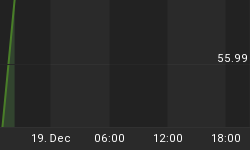The dollar is off its lows following today's bomb blasts in London, which are reported to have resulted in the death of 45 people and about 1000 injured.
Currency market reaction was not swift as it took nearly an hour before the first blast was confirmed to have been a bomb rather than just a power failure. Once the subsequent 3 blasts took place, the pound and the dollar began their declines.
The currency market reaction was most visible at approximately 4:50 am New York Time, when the dollar and the pound began falling against the majors, with the dollar losing about 1.5 cents against the euro from $1.1925 to as much as $1.2040 before stabilizing towards the $1.1950s. Sterling hit a 19 month low against the dollar at $1.7396, breaching below the key support of $1.7479, while tumbling to a 5-week low against the euro at 68.85 pence and lost 2 centimes against the Swiss franc (from 2.2840 to 2.2420) before edging back up to 2.2560. Sterling also lost 2 yen to 194.40 before settling around the 194.80.
Bad Timing for Sterling
The British currency did show a brief jump after the Bank of England held rates unchanged at 4.75%. We were expecting a 40-45% chance of an interest rate cut considering the deterioration in the latest economic indicators and dovishness in the minutes of the June meeting. Speculation of an easing mounted further after the central bank announcement was delayed for about 20 minutes from its scheduled time of 7:00 am NYT, causing some market players to expect the central Bank to cut in order to provide market liquidity after the attacks.
Nevertheless, considering the recessionary manufacturing industry in the UK and cooling housing market (June Halifax housing price index fell to weakest level since March 2001), we expect the central Bank to cut interest rates in its August meeting by 25 bps or by as much as 50 bps in September.
Mulling Market Reactions to Terrorist Attacks
Since Sep 11, the US dollar has lost its safe haven status to the Swiss franc and to a lesser extent the Japanese yen. Terrorist attacks have increasingly become dollar negative as the majority of those have targeted US interests directly or indirectly on the grounds of ideological arguments or foreign policy issues. This was cogently demonstrated by the Nov 20, 2003 bomb blasts in Turkey which were more punishing to the dollar and sterling rather than the euro. Since those blasts targeted the British Consulate and a British Bank, as well as in protest of President Bush's visit to the Central Asian nation, the attacks were seen as a clear attack on US-UK interests despite their presence in Eurasia.
The importance of the identity of the perpetrators of terrorist attacks is essential in shaping the market reaction. The method of today's bomb blasts as well as their concentration (on the same day) is reminiscent of past Al-Qaeda-type attacks as seen in the series of bombings in Casablanca (May 17, 2003), Istanbul (November 20, 2003), Madrid (March 11, 2004) and Jakarta (Sep 9, 2004).
Although London police confirmed it has not received any pre-warnings or claims of responsibilities, there are claims by a website of a terrorist group purporting itself to be "Secret Group of Al Qaeda Jihad in Europe ". The Group said the attacks in reaction to the British participation in military operations in Afghanistan and Iraq. Although the authenticity of such claims could not be verified, the attacks contain the prints of an al Qaeda attack, which is sufficient to trigger today's market reactions.
Looking ahead, the selection of London for the 2012 Olympics will likely trigger the multiplication of bomb alerts and scares which could lead to a relative desensitization to event risk in the markets.
Attacks Remove Focus on Friday's US Payrolls
Today's media/market coverage on the attacks has shifted attention from tomorrow's release of the US June nonfarm payrolls report, which could shape a key juncture in the markets' pricing of further interest rate hikes. Last week's upgrade of the FOMC language and this week's stronger than expected factory orders report as well as the jump in ISM services, have bolstered chances of a 50-bp increase in the Fed funds rate by year-end. We still see a 70% chance of rates ending at 3.50% and 30% probability of them ending at their current 3.25% level. Only a payrolls report of more than 180K jobs will be dollar positive especially now that the employment component of the ISM services has shown its highest rise in 4 months and the 4-week average of the weekly jobless claims at a 4-month low. A payback to last month's disappointing 78K figure could also help produce strength in the July figure. Only a figure of less than 140-30K would weigh on the US dollar.
Best,
















